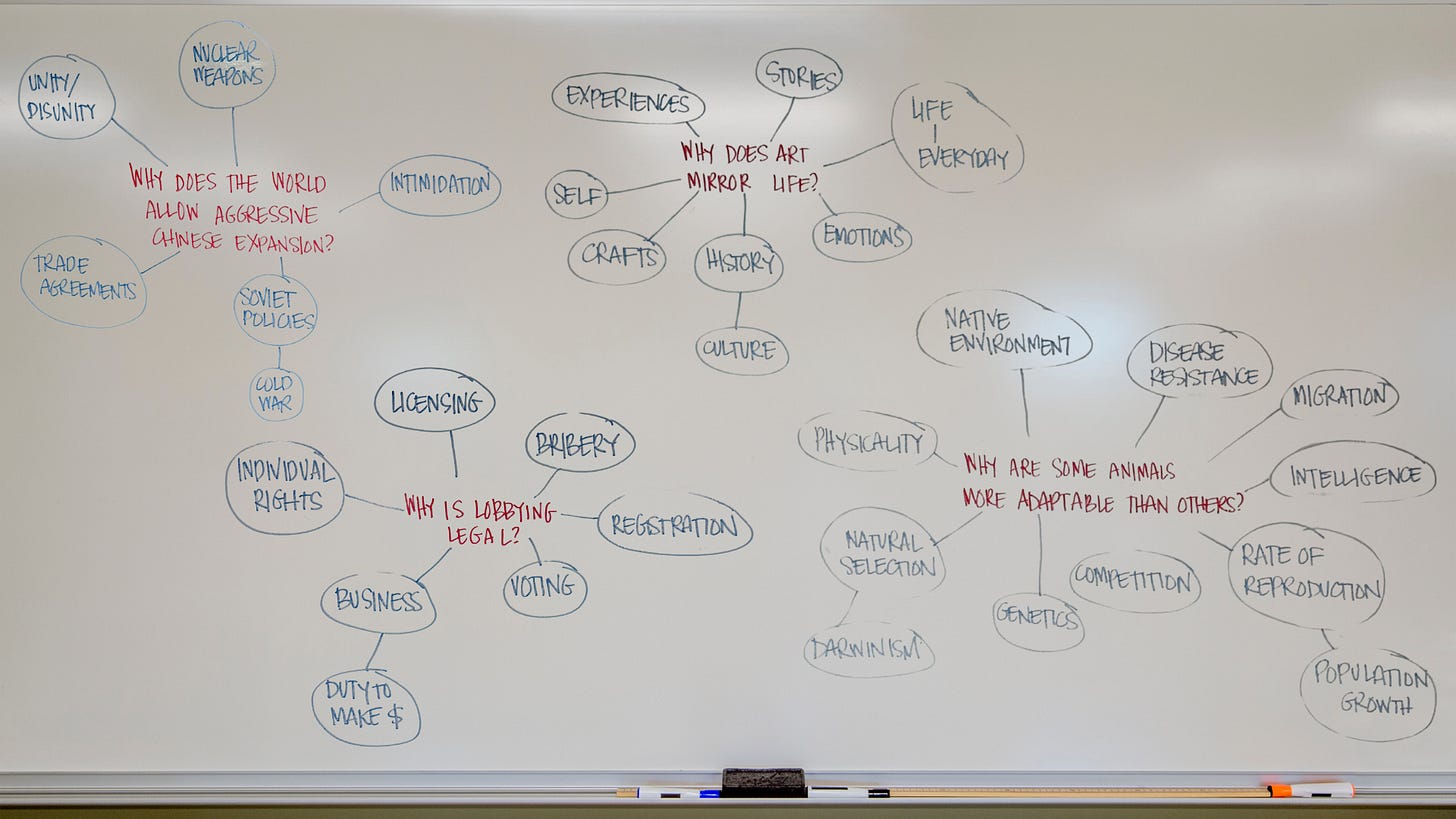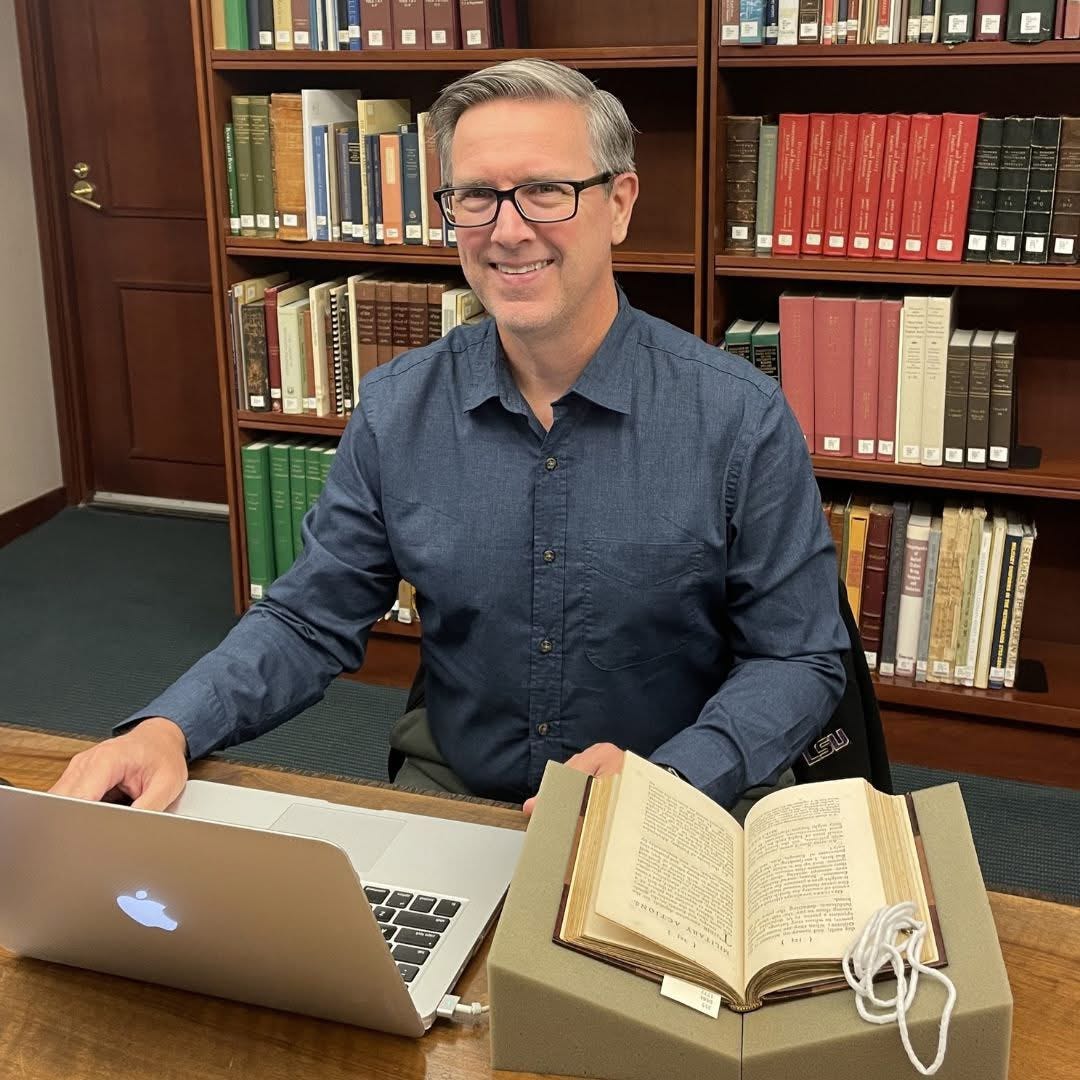Asking Why: How One Faculty Member Sparked 150 Writing Topics in 10 Minutes
Explore one C-I assignment from an International Studies professor that encourages students to keep asking questions.
In the world of International Studies, it's not unusual for classroom conversations to revolve around complex, weighty global issues—war, terrorism, inequality. But one faculty member recently decided to pause the intensity in their general education Contemporary Global Issues course, offering students a new way to engage: a creative, curiosity-driven exercise called The WHY Mindmap.

The Purpose Behind the Shift
International Studies professor Scott Madere had two goals in mind for his course:
To provide a moment of intellectual relief from the emotionally taxing subject matter.
To guide students toward selecting meaningful, self-directed topics for an upcoming writing assignment draft focused on a country of their choice.
At the heart of this approach was one powerful question: “Why?” It was used as both a tool for discovery and a spark for deeper engagement with international issues.
The Process: Turning Curiosity Into Research Topics
The WHY Mindmap unfolded in seven simple but strategic steps:
Advance Notice: A week before the activity, students were asked to start thinking about any topic from class that interested them. It could be serious or light, global or cultural—anything—as long as the question began with the word “why” and had international relevance.
The First Question: On activity day, one student volunteered a “why” question, which was written on the board. Students were then given five minutes to find answers using any resource available—AI tools, Google, academic databases, or each other.
Keyword Capture: Rather than focusing on complete answers, the instructor listened for key terms in student responses and circled them on the board in green—visually anchoring the brainstorming process.
Repetition for Richness: The process was repeated with three more questions, building a board filled with why questions and roughly 30 green-circled keywords.
Country Connection: Students were then asked to consider the country they had chosen for their assignment and connect it to one or more of the green keywords—then create a new “why” question based on that connection.
Collaborative Posting: A Moodle forum was set up where students could post their evolving “why” questions as discussion threads, making the creative process visible and collaborative.
Organic Topic Generation: Within minutes, dozens of viable, personally relevant writing topics began to emerge—each one student-driven and tied to the course’s objectives.
The Outcome: Big Results from a Simple Prompt
In two class sessions totaling around 50 students, the results were immediate and impressive:
First class: Over 80 potential topics
Second class: Over 70 topics
Total: 150 student-generated writing prompts
Beyond the numbers, the benefits were wide-reaching:
Students felt ownership over their research
The class modeled responsible, creative use of AI in the humanities
Curiosity and critical thinking were visibly activated
Students developed clear focus areas tied to global issues
The exercise reinforced the value of collaborative brainstorming
It emphasized “why” as a foundational research question
Faculty gained 150 insights into student interests—fuel for future lectures and curriculum planning
Several of the topics aligned naturally with deeper academic research opportunities, particularly within the department’s student recognition programs
Building Bridges Across Courses
One of the most strategic aspects of this technique is its curricular alignment. The department’s Senior Capstone Seminar is built entirely around a major research project that begins with a “why” question. Introducing this method to students in the 2000-level course lays essential groundwork for that final-stage research—boosting readiness, confidence, and connection across the academic journey.
Sample Student-Generated “Why” Questions
A few examples of what students created during this short but powerful exercise:
Why does Norway have a universal health care system?
Why are there so many armed groups attacking schools in Nigeria?
Why is tourism important to Ireland’s economy?
Why is access to clean water still a major issue in many parts of the world?
Why is the life expectancy in Russia lower than in the U.S.?
Why does Japan drive on the left side of the road?
Why are tourists fearful of visiting El Salvador?
Why does China want to collect global data?
Why is Africa portrayed so negatively in Western media?
Why hasn’t Greece signed the Treaty on the Prohibition of Nuclear Weapons?
Each question not only met the assignment requirements but also reflected genuine student curiosity—an essential ingredient in great research.
This exercise highlights how small pedagogical shifts can yield big results. By simply reframing the assignment around a single, open-ended word—Why?—students reconnected with their creativity, discovered personally resonant research topics, and took a step toward academic independence. This technique, shared by a thoughtful faculty member in International Studies, is a reminder: Sometimes the best teaching tool is the one that encourages students to keep asking questions.
About the C-I Teacher: Scott Madere is an Instructor in the LSU International Studies program who worked as a journalist and communications professional for more than 25 years prior to becoming a full-time historian. Scott graduated from LSU with a bachelor’s degree in mass communication in 1993, and earned a master’s degree in military history from Norwich University in 2016. He received his Ph.D. in European history from LSU in May 2024. Scott has led courses at LSU in the history of Western Civilization, World War II, Contemporary Global Issues, and senior-level International Studies Research. His own research centers on the influence of ancient Greece and Rome on Eighteenth-century militaries, and he is recognized as a fellow of the Masséna Society and the American Revolution Institute.



Let's start a conversation: What's one "Why?" question that could revolutionize engagement in YOUR classroom? How can this be adapted across different subjects and teaching styles?